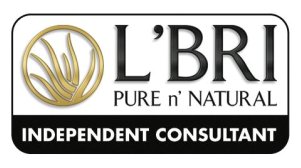|
What Is Eczema?Eczema, also called dermatitis, can be a temporary or a chronic skin disease which is caused by inflammation of the upper layers of the skin. Dermatitis is typically found on the face, neck, elbows, knees, and ankles. You could suffer from brief reactions (a few hours to days) or from chronic dermatitis. Symptoms include dryness, recurring skin rashes, redness, swelling, intense itching, crusting, flaking, cracking, oozing, and bleeding. This condition can affect adults and children, but it is most common in infants. By age 3, the condition is permanently resolved in about half of the cases. It can be embarrassing and can lower one's self confidence and self esteem. This is not a contagious condition. The cause is unknown, but it tends to runs in families. It affects nearly 15 million people in the United States. It is thought to be caused by abnormal function of the body's immune system. Some triggers include soaps, cosmetics, clothing, detergents, jewelry, sweat, change in the temperature, and stress. You could keep a daily journal of your food, products, and activities, which will help you determine what triggers your eczema.
Doctors are able to diagnose after a physical exam. Sometimes biopsies are taken to rule out other skin diseases. Here are the different types 1. Atopic dermatitis - most common, can come and go, affects 10% of infants and 3% of adults 2. Contact Eczema - reaction to an acid, a cleaning agent, or other chemical, difficult to determine trigger, an example is poison ivy 3. Seborrheic - yellowish, oily, scaly patches and cause is unknown 4. Nummular - coin-shaped patches of irritated skin on arms, back, buttocks, and legs, less common and can be chronic 5. Neurodermatitis - scaly patches on head, legs, wrists, and forearms, chronic, caused by scratching and itching, common in women ages 20-50 6. Stasis (varicose) - reddish-brown discoloration found on leg(s), leads to oozing and blistering, more common for the middle-aged and elderly 7. Dyshidrotic - clear deep blotches that itch and burn on palms and soles of feet, more common during spring and summer months Types of treatment include medication both creams and pills, changing your lifestyle to prevent itching and inflammation, having a good skin care routine, keeping the skin hydrated, and phototherapy.
Prevention Tips-moisturize frequently -know your own triggers and avoid them -avoid over bathing -wear gloves to protect your hands -be gentle, shower or soak in a bath, use a soft towel to pat dry, and apply moisturizer -avoid scratching -don't get overheated -manage your stress -even if eczema heals, continue to practice proper skin care -avoid sudden changes in temperature -keep fingernails short to avoid puncturing your skin While there is no cure, it is manageable and preventable.
Click here to return from eczema to the home page.
|
To Order Your L'Bri Products Now,
Learn how to protect your skin with these tips to preventing skin cancer.
Click here to learn more.

Here is a great site I found about sun protection. Find out more about skin cancer, sun protection, sunscreen, eye sun protection, and much more!
Click here.
These conditions can really affect one's self esteem. I have found this great site about improving your self esteem and learning to love yourself just as you are.
Click here.








